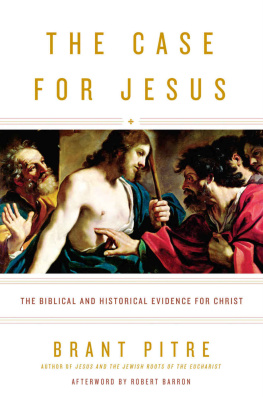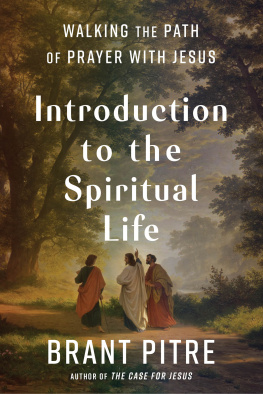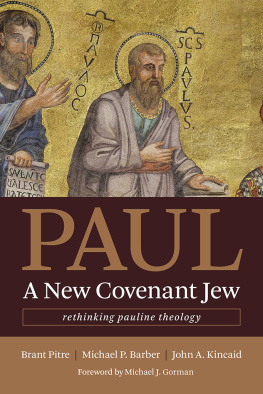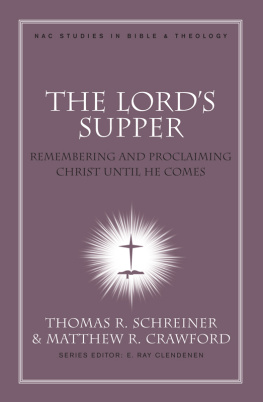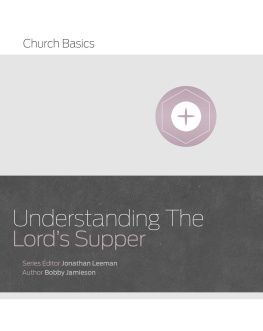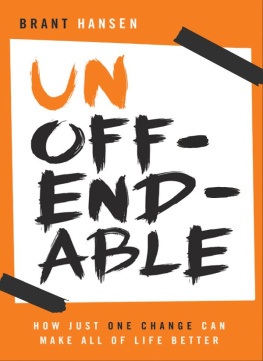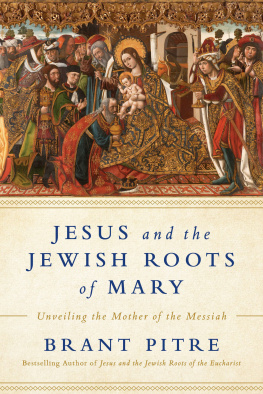Brant Pitre - Jesus and the Last Supper
Here you can read online Brant Pitre - Jesus and the Last Supper full text of the book (entire story) in english for free. Download pdf and epub, get meaning, cover and reviews about this ebook. year: 2015, publisher: Wm. B. Eerdmans Publishing, genre: Home and family. Description of the work, (preface) as well as reviews are available. Best literature library LitArk.com created for fans of good reading and offers a wide selection of genres:
Romance novel
Science fiction
Adventure
Detective
Science
History
Home and family
Prose
Art
Politics
Computer
Non-fiction
Religion
Business
Children
Humor
Choose a favorite category and find really read worthwhile books. Enjoy immersion in the world of imagination, feel the emotions of the characters or learn something new for yourself, make an fascinating discovery.

- Book:Jesus and the Last Supper
- Author:
- Publisher:Wm. B. Eerdmans Publishing
- Genre:
- Year:2015
- Rating:4 / 5
- Favourites:Add to favourites
- Your mark:
- 80
- 1
- 2
- 3
- 4
- 5
Jesus and the Last Supper: summary, description and annotation
We offer to read an annotation, description, summary or preface (depends on what the author of the book "Jesus and the Last Supper" wrote himself). If you haven't found the necessary information about the book — write in the comments, we will try to find it.
Jesus and the Last Supper — read online for free the complete book (whole text) full work
Below is the text of the book, divided by pages. System saving the place of the last page read, allows you to conveniently read the book "Jesus and the Last Supper" online for free, without having to search again every time where you left off. Put a bookmark, and you can go to the page where you finished reading at any time.
Font size:
Interval:
Bookmark:
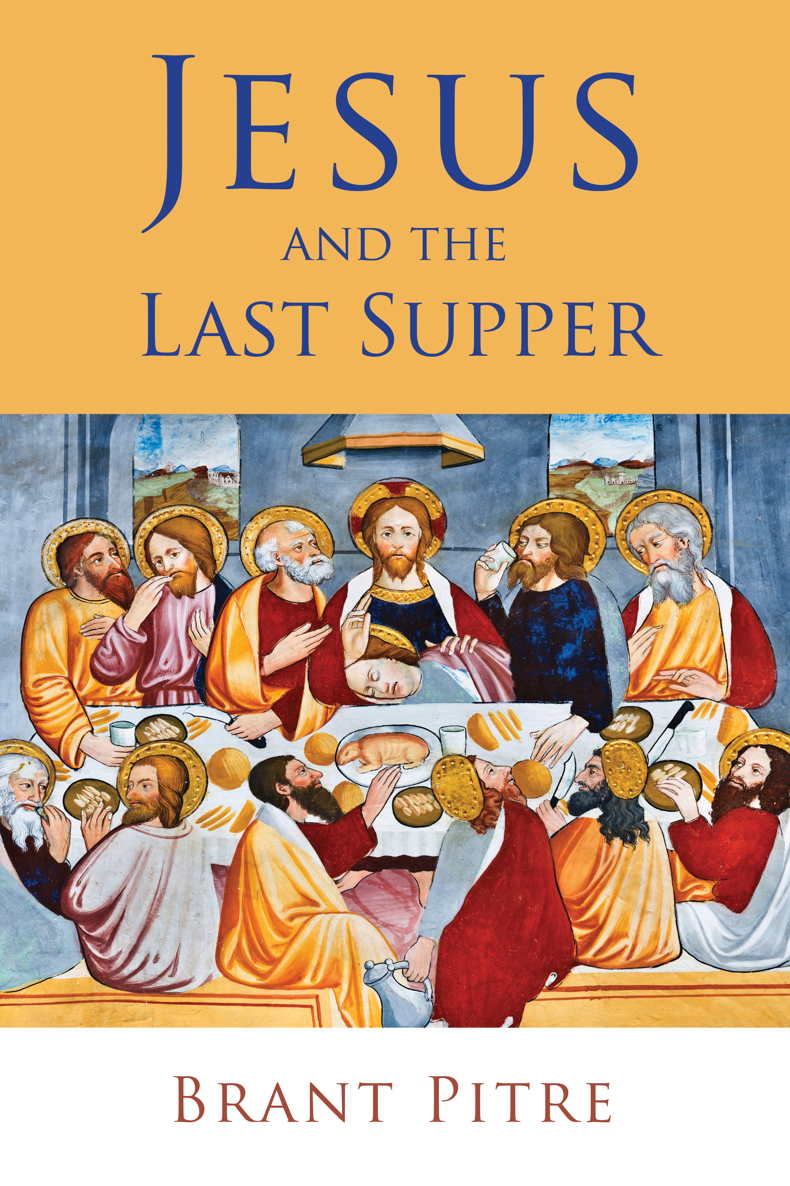
For
David Aune,
Delbert Burkett,
Amy-Jill Levine,
John Meier, and
James VanderKam,
my teachers
CHAPTER 5
Passover looked back to the exodus, and on to the coming of the kingdom. Jesus intended this meal [the Last Supper] to symbolize the new exodus, the arrival of the kingdom through his own fate. The meal, focused on Jesus actions, with the bread and the cup, told the Passover story, and Jesus own story, and wove these two into one.
N. T. Wright
Now that we have made a case for regarding the Last Supper as a Passover meal, we can ask: If Jesus final meal was in fact a Passover meal, what significance does it have for our understanding of the Last Supper? What light does the Passover shed on the meaning of his words and actions in the Upper Room? In a first-century Jewish context, how are Jesus actions at the Last Supper similar to an ordinary Jewish Passover, and how are they different? What are the implications of these similarities and differences?
In this chapter, we will try to answer these questions in three stages. First, we will briefly survey the shape of the Passover in the Old Testament and early Jewish literature. The primary goal of this survey is to familiarize the reader with the main features of the Jewish Passover so that these features or the absence thereof can be seen with greater clarity when we turn to the Last Supper itself. Second, we will study the important account of Jesus sending the disciples to prepare the Passover in the Upper Room on the afternoon before he celebrated the Last Supper (Matt 26:17-19; Mark 14:12-16; Luke 22:7-13). This is intended both to solidify earlier conclusions about the date of the Last Supper, and to root Jesus actions at the Last Supper more firmly in their Passover context. Third, we will then return to Jesus identification of the Passover bread as his body and the Passover wine as his blood, and his command to the disciples to repeat his actions in remembrance of him (Matt 26:26-28; Mark 14:22-24; Luke 22:14-20; 1 Cor 11:23-25).
As we have already seen, the Passover context of the Last Supper does not exhaust the meaning of Jesus words and deeds at his final meal. Nevertheless, given the emphasis in all four Gospels on the Passover meal as the overarching and dominant context of the Last Supper (see chapter 4), I am suggesting that the fact that Jesus chooses the Passover as the occasion upon which to perform his final prophetic sign is significant. After all, he conceivably could have performed the Last Supper during some other Jewish feast, such as the Day of Atonement, or Tabernacles, or during no feast at all. Given the fact that Jesus chose the Passover, it is important to ascertain what significance this has for how we understand his words and deeds in context.
As I hope to show, the Last Supper represents (1) the institution of a New Passover meal, wherein believers eat the eschatological Passover lamb; participation in this meal involves participation (2) in his death and (3) in the redemptive power of the new exodus that will be set in motion by his death. In other words, Jesus last Passover meal was a prophetic sign in which he identified himself as the eschatological Passover lamb, the redemptive sacrifice that would inaugurate the new exodus. In this way, Jesus reconfigured the ordinary Jewish Passover meal originally centered on the historical sacrifice of the Passover lamb and the deliverance of the Israelites from Egypt around the eschatological offering of his own body and blood. By identifying himself as the new Passover lamb, he sought both to signify and set in motion the exodus spoken of by the prophets, which would take place through his suffering and death.
In order to understand Jesus actions at his final Passover meal in their ancient Jewish context, it is important first to study the shape of the Passover in the Old Testament and early Jewish literature. Because I will draw on many of the texts covered in this survey in our study of the Gospel accounts below, this overview will function more as a summary of key points than a detailed analysis.
The Passover in Jewish Scripture
In the Old Testament, there are a number of texts that describe the shape of the Passover ritual. the most important description is found in the Pentateuchs account of the night of Israels exodus from Egypt (Exodus 1213). It is here that we first find a detailed account of the ritual actions that constitute the basic shape of the Passover sacrifice and meal:
The L ord said to Moses and Aaron in the land of Egypt: This month shall be for you the beginning of months; it shall be the first month of the year for you. Tell all the congregation of Israel that on the tenth day of this month they shall take every man a lamb according to their fathers houses, a lamb for a household; and if the household is too small for a lamb, then a man and his neighbor next to his house shall take according to the number of persons; according to what each can eat you shall make your count for the lamb. Your lamb shall be without blemish, a male a year old; you shall take it from the sheep or from the goats; and you shall keep it until the fourteenth day of this month, when the whole assembly of the congregation of Israel shall kill their lambs in the evening. Then they shall take some of the blood, and put it on the doorposts and the lintels of the houses in which they eat them. They shall eat the flesh that night, roasted; with unleavened bread and bitter herbs they shall eat it. Do not eat any of it raw or boiled with water, but roasted, its head with its legs and its inner parts. And you shall let none of it remain until the morning, anything that remains until the morning you shall burn. In this manner you shall eat it: your loins girded, your sandals on your feet, and your staff in your hand; and you shall eat it in haste. It is the L ord s Passover. For I will pass through the land of Egypt that night, and I will strike all the first-born in the land of Egypt, both man and beast.... The blood shall be a sign for you, upon the houses where you are; and when I see the blood, I will pass over you, and no plague shall fall upon you to destroy you, when I strike the land of Egypt. This day shall be for you a memorial day, and you shall keep it as a feast to the L ord ; throughout your generations you shall observe it as an ordinance for ever. (Exod 12:1-14)
Several aspects of this foundational text are worthy of our attention.
First, it is important to point out that the original Passover (pesa) is described as a domestic sacrifice of all twelve tribes of Israel. In the biblical narrative, the exodus from Egypt takes place before the establishment of the exclusively Levitical priesthood (cf. Exod 32:25-29); hence, at this point in Israels history, all twelve tribes have not yet lost their priestly faculties and thus can act as priests, by both sacrificing the lamb and by pouring the blood into a basin and anointing the home with it. Second, note the prominence assigned to eating the flesh of the Passover lamb. While a single verse is devoted to the slaughter of the lamb, a whole series of prescriptions revolve around its consumption. This emphasis is significant, for it suggests that the original Passover is a sacrificial meal, Fourth and finally, from its inception, the original Passover is instituted to be repeated: it is to be a memorial day or remembrance (zikk r n) throughout all generations (Exod 12:14). In particular, Passover is to be celebrated annually, along with the seven-day feast of unleavened bread (Exod 12:17). Indeed, the book of Exodus even bears witness to a ritualized questioning of the father by the son that would accompany the celebration of this annual memorial in order to explain its significance (Exod 12:21-23, 26-27; 13:6-8).
Font size:
Interval:
Bookmark:
Similar books «Jesus and the Last Supper»
Look at similar books to Jesus and the Last Supper. We have selected literature similar in name and meaning in the hope of providing readers with more options to find new, interesting, not yet read works.
Discussion, reviews of the book Jesus and the Last Supper and just readers' own opinions. Leave your comments, write what you think about the work, its meaning or the main characters. Specify what exactly you liked and what you didn't like, and why you think so.

